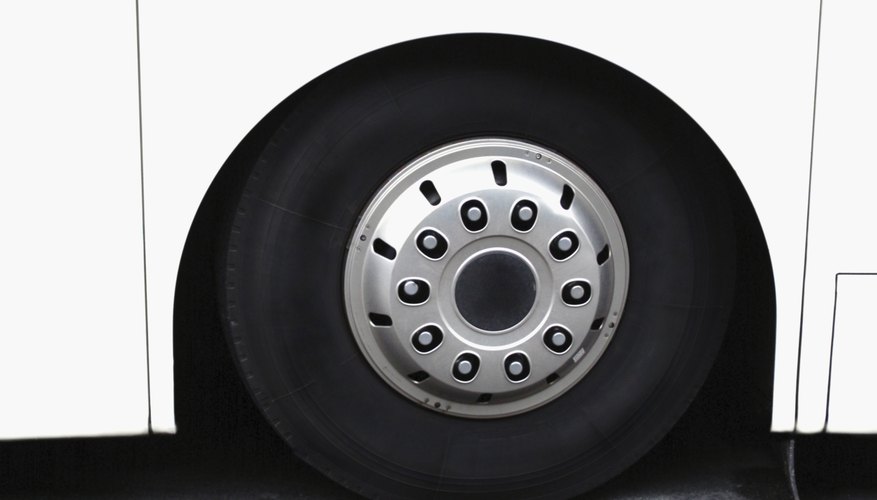Sandals, playground climbers and garden planters are three of the more popular uses for old car and truck tires. Tires make a sturdy material for a variety of uses, but if you've ever tried cutting one, you know what a bear of a job that can be. Crafters have a couple of suggestions for how to slice up an auto tire efficiently, if not always easily.
Hammer and Chisel
Cut a section of the tire to work with. You don't want to be trying to cut and manipulate a big heavy tire at the same time. Avoid cutting the inside rim of the tire due to the heavy band of steel wire reinforcement there.
Place a heavy block of wood behind the tire where you will be cutting. Mark a line where you want to cut the tire.
- Cut a section of the tire to work with.
- Place a heavy block of wood behind the tire where you will be cutting.
Sharpen your chisel and use a mini-sledge hammer to pound with. Place the block under the tire, place the chisel along the cutting line and give it a good whack.
Work you way along the cut line with the chisel and hammer till you cut the piece free from the tire.
Knife
Sharpen the edge of the knife to a keen edge. A knife is the most dangerous tool for working with tires.
Cut slowly sawing back and forth. Don't bind the blade in the rubber and then push very hard to free it. If the blade slips free, it can accidentally slice off fingers. Work slowly cutting a little bit at a time.
Resharpen the blade frequently. A very best blade for the job is one that is very sharp. Keep the hone close by as you work. If the blade starts to bind, resharpen.
- Sharpen the edge of the knife to a keen edge.
- A very best blade for the job is one that is very sharp.
Trim away waste tire from the cut to avoid binding the blade. A free blade is a safe blade.
Cut pieces of thick reinforced areas or steel wires with a hacksaw or wire cutters before continuing with the knife.
Power Tools
Cut out a section of the tire first that is larger than the piece you want to cut out. Do not cut the sealing bead that runs around the inner rim. It contains heavy wire and can wreck your saw blades.
Choose a blade for your reciprocating saw, table saw or band saw that cuts smoothly through the heavy rubber tire. Smaller tooth sizes usually work better. Be sure the tire is cloth of fibreglass reinforced as steel reinforced tires can jam and wreck saw blades.
Work the cutting blade slowly through the rubber material, pulling it apart behind the cut to prevent it from binding the blade. Make small cuts.
Cut away waste material behind the cut to keep the blade from binding. A free blade is a safer blade.
- Cut out a section of the tire first that is larger than the piece you want to cut out.
- Cut away waste material behind the cut to keep the blade from binding.
Back off the cut if the blade starts to bind. Make several passes at difficult cuts or tight turns in the pattern, remembering to sheer away waste material around the cut. Give your blade plenty of room.
TIP
Work slowly to avoid binding the blade. Cut waste away from your pattern frequently so as not to bind blades. Do not force cuts. Blades can jump free and cut unintentioned material or your hands. Sharpen hand blades frequently.
WARNING
Wear safety goggles and protective clothing. Avoid handling bits of melted rubber coming off the cut--they are very hot. If the blade does bind, shut off the saw and back it out. Do not attempt to pull out a blade if the saw is still on. Don't force blades, especially with hand tools. They can slip and cut you. Fingers are especially vulnerable.
